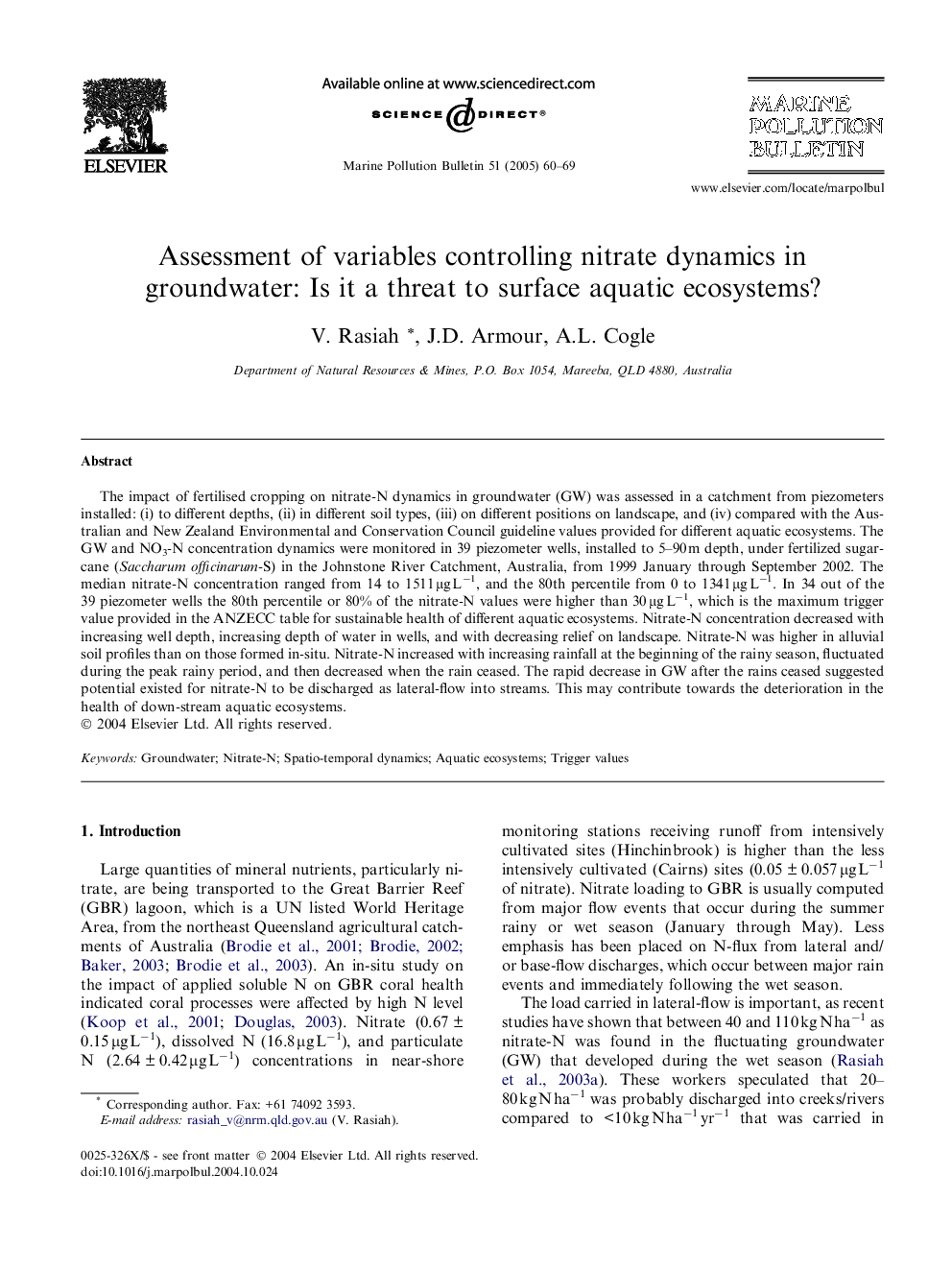| Article ID | Journal | Published Year | Pages | File Type |
|---|---|---|---|---|
| 9465864 | Marine Pollution Bulletin | 2005 | 10 Pages |
Abstract
The impact of fertilised cropping on nitrate-N dynamics in groundwater (GW) was assessed in a catchment from piezometers installed: (i) to different depths, (ii) in different soil types, (iii) on different positions on landscape, and (iv) compared with the Australian and New Zealand Environmental and Conservation Council guideline values provided for different aquatic ecosystems. The GW and NO3-N concentration dynamics were monitored in 39 piezometer wells, installed to 5-90 m depth, under fertilized sugarcane (Saccharum officinarum-S) in the Johnstone River Catchment, Australia, from 1999 January through September 2002. The median nitrate-N concentration ranged from 14 to 1511 μg Lâ1, and the 80th percentile from 0 to 1341 μg Lâ1. In 34 out of the 39 piezometer wells the 80th percentile or 80% of the nitrate-N values were higher than 30 μg Lâ1, which is the maximum trigger value provided in the ANZECC table for sustainable health of different aquatic ecosystems. Nitrate-N concentration decreased with increasing well depth, increasing depth of water in wells, and with decreasing relief on landscape. Nitrate-N was higher in alluvial soil profiles than on those formed in-situ. Nitrate-N increased with increasing rainfall at the beginning of the rainy season, fluctuated during the peak rainy period, and then decreased when the rain ceased. The rapid decrease in GW after the rains ceased suggested potential existed for nitrate-N to be discharged as lateral-flow into streams. This may contribute towards the deterioration in the health of down-stream aquatic ecosystems.
Related Topics
Physical Sciences and Engineering
Earth and Planetary Sciences
Oceanography
Authors
V. Rasiah, J.D. Armour, A.L. Cogle,
